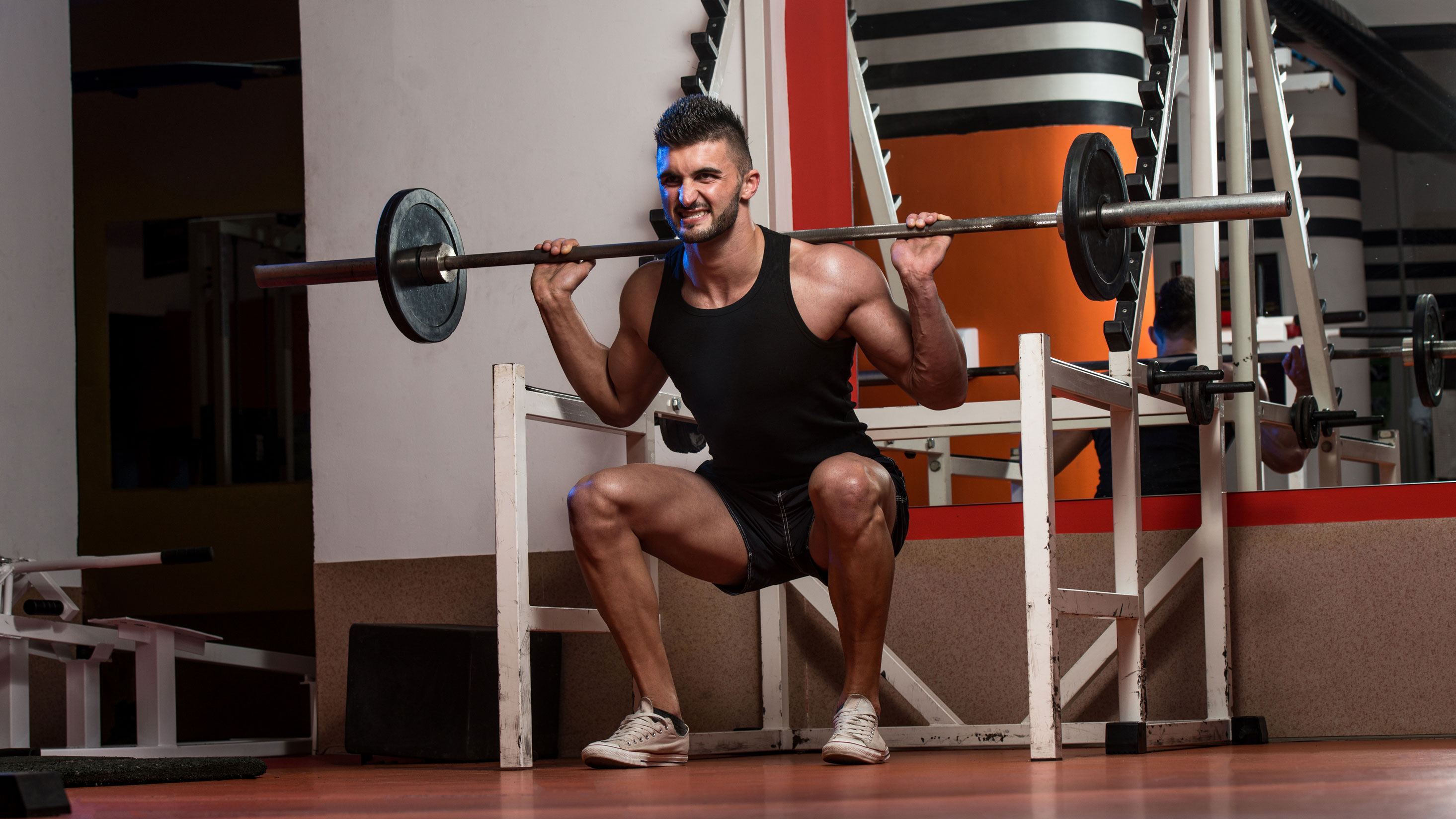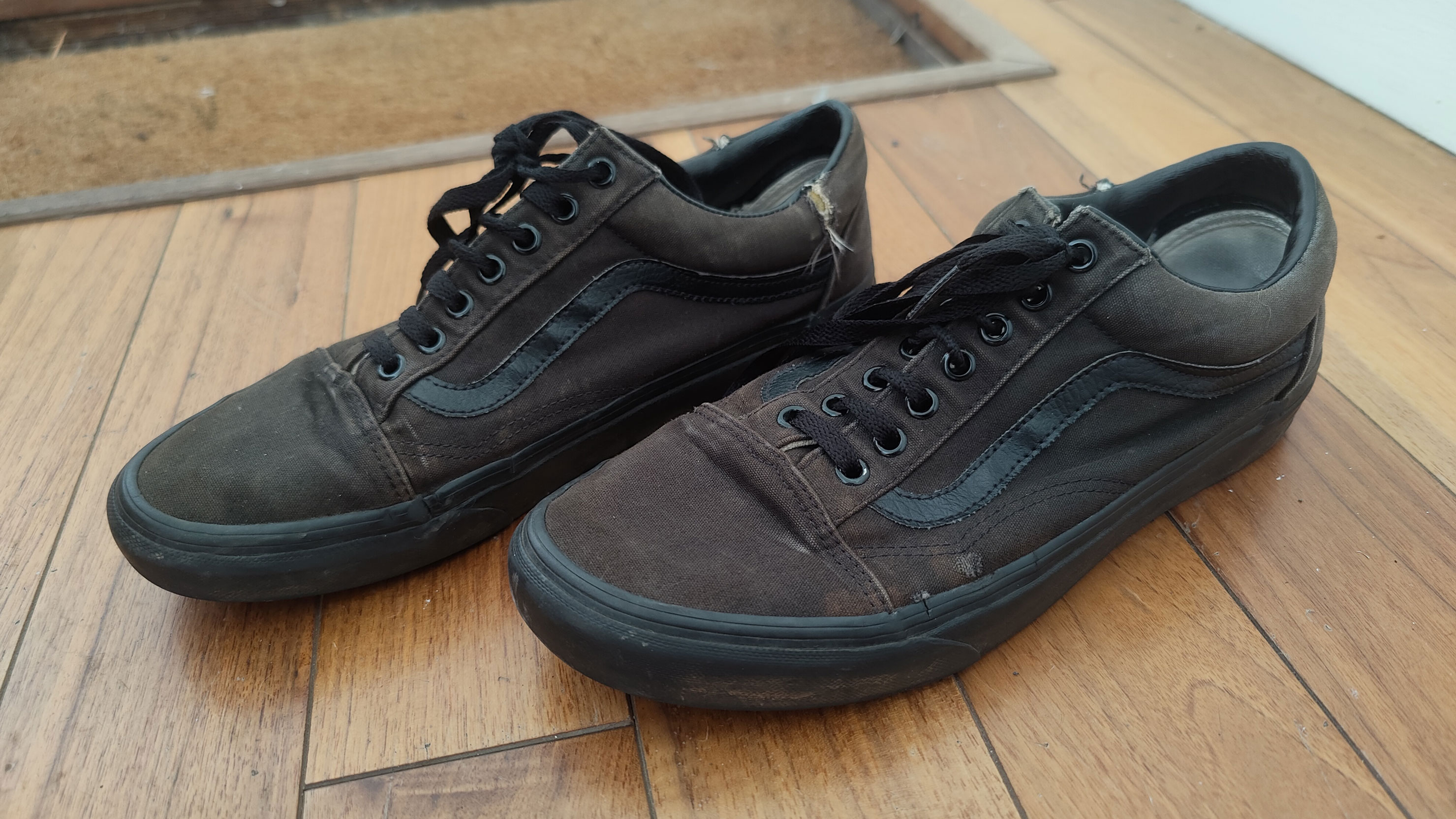Never, ever wear your running shoes to squat or deadlift in the gym
Use flat shoes instead

As a regular runner and TechRadar’s resident fitness and wellbeing editor, I’m in the privileged position of getting to test a lot of the best running shoes available. From shoes designed for fast-paced 10ks to shoes engineered for marathon runners, we get to test the latest in exercise footwear technology.
Cushioned midsoles, breathable sweat-wicking uppers, reactive foam outsoles for extra energy return… you name it, we’ve had it. Even other dedicated workout shoes engineered for CrossFit and HIIT workouts, or all-rounders like the Lululemon Chargefeel, offer reactive foam-cushioned soles to help with explosive movements such as burpees.
However, a couple of times a week, I eschew all this fancy footwear tech and I leave the highly-engineered hooves at home. Instead, I lace up a pair of beaten-up Vans, which have probably seen close to a decade of use, and hit the gym in those instead. These things are practically falling apart, and frankly unfit to wear in polite society, but they’re the perfect sartorial choice for the squat rack.
When you wear a running shoe, the bottom of your feet is more often than not protected by a midsole and outsole comprised of foam of various densities, occasionally accompanied by a plate of carbon or metal to help the shoe pop back into shape after flexing. Some are more springy than others, but unless you’re going for a barefoot style of running, your running shoe is likely to have some sort of squishy base that’s thicker at the heel than the toe.
If you’re lifting weights, especially with compound movements such as squats, deadlifts, or bent-over rows, this is bad. All that sophisticated technology designed to protect your heel has nothing to do except give your feet an unstable surface here, the foam acting a bit like a quagmire. You want a nice, solid base to plant your feet when you’re lifting something heavy, and squatting in soft running shoes is a bit like trying to run a full wheelbarrow across a trampoline.

For compound lifting, my trusty old Vans work well because they’re thin, flat-soled shoes that provide a stable surface for lifting heavy. They’re also dead comfy and I like them.
Strength coach Rogan Allport of Rebellion Strength says the best shoe for lifting “comes down to the thickness of the sole. The normal running shoe sole is so thick that it doesn’t provide a stable surface for the foot."
If you’re not using a purpose-built weightlifting shoe with a solid sole, Allport says it’s best to go for “a lower profile shoe that has no more than a 4mm drop from the heel to the toe. When in doubt, go as close to barefoot as possible.”

Allport is a weightlifting expert and qualified strength coach based in Cardiff, Wales. He has trained everyone, from national strongman competitors and athletes to busy moms.
Vans, with a 0mm drop, are completely flat shoes with a grippy rubber sole. Converse All-Stars, and even most tennis-style shoes, also fit this bill.
It’s worth noting that for isolated exercises like seated bicep curls or bench presses, you don’t really need “optimal” shoes, but if you’re doing compound movements such as deadlifts and squats, a stable surface is an absolute necessity.
The best part is that you can get a great pair of lifting shoes for a song, with no need to spend lots of money on a dedicated high-tech weightlifting shoe unless you’re planning to get into competing.
If you’ve got an old, low-tech pair of Vans or Converse knocking around, terrific, but you can also pick up a cheap pair of rubber-soled tennis shoes in any footwear store. Anything that helps you work out without spending lots of money is a win in our book.
Of course, if you are running on a regular basis, you're going to need a pair of decent running shoes in order to boost your performance and ensure your joints are well-protected. Our guide to choosing the right running shoe for you is a good place to start.
Get daily insight, inspiration and deals in your inbox
Sign up for breaking news, reviews, opinion, top tech deals, and more.

Matt is TechRadar's expert on all things fitness, wellness and wearable tech.
A former staffer at Men's Health, he holds a Master's Degree in journalism from Cardiff and has written for brands like Runner's World, Women's Health, Men's Fitness, LiveScience and Fit&Well on everything fitness tech, exercise, nutrition and mental wellbeing.
Matt's a keen runner, ex-kickboxer, not averse to the odd yoga flow, and insists everyone should stretch every morning. When he’s not training or writing about health and fitness, he can be found reading doorstop-thick fantasy books with lots of fictional maps in them.